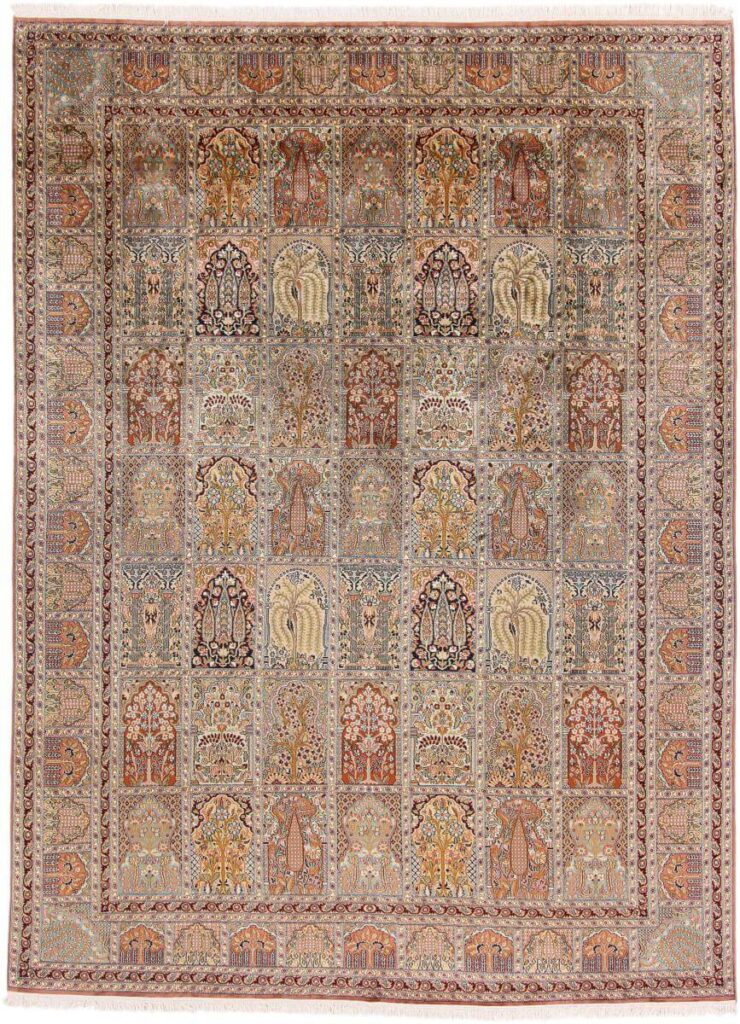My Two Decades with Handmade Carpets: A Story of Artistry, Quality, and Elegance
Handmade carpets aren’t just decor items; they’re artworks that tell stories and highlight cultural heritage. Across big and small cities in different countries, I see many artisans dedicating their lives to designing, producing, and crafting these fabulous and long-lasting, lovable floor coverings. These intricate textiles, sought after for centuries for their beauty, quality, and craftsmanship, have a rich history.
On this page, I am going to share my experience of more than 20 years in this market. We will delve deep into handmade carpets, from their history and creation to types, styles, and maintenance tips. Whether you’re a carpet enthusiast or looking to add elegance to your home, this guide has you covered.Topics in This Guide
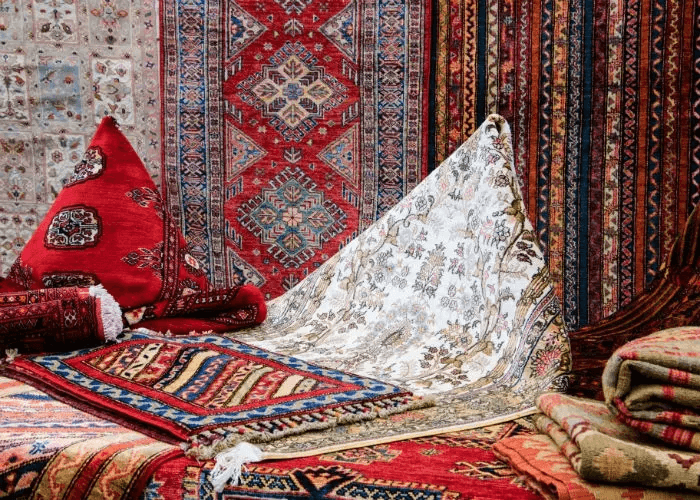
We'll cover topics to understand handmade carpets, including:
- Handwoven Carpets: The art and techniques of handcrafting, highlighting the skill and time each piece demands.
- Traditional Rugs: Traditional coloring, patterns, and cultural meanings.
- Antique Rugs: The significance and value of vintage carpets.
- Knotted Rugs: The knotting process, crucial for many handmade carpets.
- Silk Rugs: The luxury and uniqueness of silk rugs.
- Middle East and Asian Rug Producers: A look at regions famed for their rug-making traditions, such as:
- Iran (Persian Rugs): The rich history and designs of Persian rugs.
- Turkish Rug: Unique motifs and traditional weaving techniques of Turkish rugs.
- Indian Rug: The varied styles and methods of Indian rugs.
- Kashmir Rug: The exquisite designs and craftsmanship of Kashmir rugs.
- Afghan Rug: The enduring patterns and rug making traditions of Afghanistan.
Maintenance and Repurposing: Here are some quick tips to maintain your carpets well, along with some ideas for repurposing them.
Ok, let’s dive into why humans began making carpets and how they’ve become a worldwide staple in homes over centuries.
Old Stories of Carpets and Their Importance in Our Homes
Thousands of years ago, carpets began their journey in the steppes of Central Asia, where nomadic tribes crafted them for practical needs. These early weavers used carpets as floor coverings to insulate their tents against the cold, as well as for sitting and sleeping.
As time passed, the utilitarian aspect of carpets blended with artistic expression, leading to the creation of pieces that were not only functional but also beautiful. This transition marked the beginning of carpets becoming a staple in homes, symbolizing warmth, comfort, and culture. The detailed designs in each carpet told stories and conveyed messages, serving as a medium of expression and showcasing the craftsmanship of their creators.
Carpet designs often get their inspiration from nature. You can see forests, rivers, and mountains in the patterns. Weavers try to put the beauty of nature into their work to bring a bit of the outdoors inside our homes. This helps us feel connected to the earth. As people built big things like mosques, the fancy designs and tiles from these buildings also started to show up in carpets. So, the designs mix natural patterns with what humans have built, making carpets that are not just art, but a mix of nature and what people have achieved.
In the modern home, carpets continue to play a vital role. Beyond their aesthetic appeal, they contribute significantly to the ambiance and acoustics of a space, offering sound insulation and a sense of coziness. Carpets also provide safety benefits, reducing the risk of slips and falls, and offer a comfortable surface for children to play on.
From ancient nomadic shelters to today’s contemporary living spaces, carpets have woven their way into the fabric of our homes and lives.



Handwoven Rugs vs. Machine-Made Rugs
Handwoven rugs are a symbol of craftsmanship and tradition. Created with unmatched dedication, artisans spend countless hours on each piece, showcasing their skills.
The time it takes to create a handwoven rug can dramatically vary depending on the type of knotting and design complexity. A standard-size rug measuring approximately 200 cm by 120 cm might take an artisan anywhere from 1 month to 40 days to complete. This variability is a testament to the intricate and labor-intensive process of hand weaving, where every knot is tied with precision and care.
Unlike machine-made rugs, each handwoven piece offers unique qualities from the weaver’s own hands, including distinctive patterns, subtle color variations, and charming irregularities, adding to their value and appeal.

Traditional Rugs and Their Color Schemes
Traditional style rugs are celebrated for their use of natural materials and coloring, embodying a connection to nature and the artisan’s environment. These traditional carpets often feature wool as the primary material, favored for its durability, warmth, and versatility. The wool used in traditional wool rugs is usually dyed with natural substances derived from plants and minerals, resulting in a rich, yet subtly varied palette that synthetic dyes cannot replicate. This approach to coloring not only enhances the beauty and uniqueness of each carpet but also ensures that the rugs are eco-friendly and sustainable.


Antique Rugs - Exploring Their Worth and the Factors Driving Up Prices
Antique rugs, including vintage Persian carpets and Iranian rugs, are rich in history and tradition. Collectors and enthusiasts often seek vintage rugs, attracted by their timeless elegance and designs that fit both traditional and modern interiors. What makes these rugs unique are their individual characteristics—no two are the same, each marked by the artisan’s craftsmanship, the unique knotting techniques used, and the passage of time. Utilizing various materials, these pieces become precious additions to any collection.

Knotted Rugs and Some Techniques
Knotted rugs, encompassing both hand-knotted and hand-tied varieties, are artisanal creations distinguished by their unique craftsmanship, which does not employ matching techniques for knotting and tying.
Among the various techniques, four notable knotting methods emerge:
- Persian Knots – Primarily used in the crafting of hand-knotted wool and silk rugs, this technique involves complexly wrapping yarn around a warp thread before passing it behind the adjacent thread. This method not only enhances the rug’s detail but also its durability.
- Turkish Knots – Commonly seen in hand-knotted rugs, the yarn is meticulously looped around two warp threads and then tightly secured, resulting in a robust and compact structure.
- Jufti Knots – This technique used in making wool and silk hand-tied rugs ties the material around four warp threads, speeding up production but sacrificing detail.
- Tibetan Knots – Unique to Tibetan hand knotted rugs, this method uses a rod to loop the yarn across two warp threads, then the rod is removed and the loops are cut, resulting in a distinctive pile.
Each knotting method gives the rug unique features, affecting its density, durability, designs, and textures.
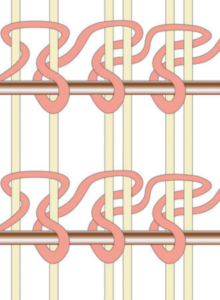


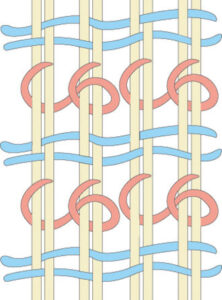
Silk Rugs - Reflecting Human Artistry and Skill
Silk rugs are famous for their beautiful work and shiny look, showing off luxury and style. They are celebrated for their soft texture and complex designs, making them highly valued in any collection. Silk rugs feature fine threads for a high knot count, enabling detailed patterns and a smooth feel. However, their exceptional beauty and quality make them expensive. This high cost is due to the labor-intensive silk production and the complex weaving process, demanding significant skill and time.
Some carpets are made entirely from 100% silk, offering incomparable luxury, while others use a mix of silk and wool to keep a shiny look at a lower cost. By blending silk with wool, these carpets reduce cost without greatly sacrificing aesthetics. This method produces shiny, elegant carpets at a more affordable price.
Iran stands out as a leading producer of silk rugs, with a rich tradition in silk weaving. This underscores its role in preserving this ancient art form and its reputation for crafting some of the world’s finest silk carpets.
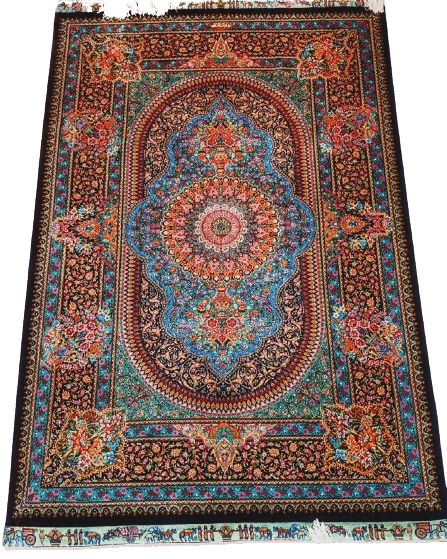
Handmade Carpets From the Middle East to Kashmir, India, and Afghanistan
Persian Carpet: A Treasure of Colors and Beauty
The Persian carpet is known worldwide for its artistry, vibrant colors, and deep symbolism, reflecting Iran’s rich cultural heritage. Each color in a Persian carpet has specific meanings, inspired by nature and the environment.
Navigating through the colors of an Iranian Persian rug is like exploring a vibrant bazaar of meanings and symbols, each one adding a layer of depth and narrative to the intricate designs.
Iran’s Persian rugs are a riot of colors, each with its own story to tell. Here’s a quick rundown of some favorites:
Red Persian Carpet
Red, often made from madder root, symbolizes beauty, wealth, courage, luck, joy, and faith. It’s a dominant color, reflecting the weaver’s passion.
Blue Persian Carpet
Blue, from indigo, ranges in shades symbolizing trust, truth, and heaven. It evokes the sky and water, bringing a sense of serenity and spiritual calm.
Green Persian Carpet
Green, derived from plants like indigo and henna, signifies life, nature, renewal, and youth. It is revered in many cultures, especially within the context of Persian rugs, as it represents paradise in Islamic art.
Cream Persian Rug
Cream, often achieved through the natural color of undyed wool, embodies calm, elegance, and simplicity. It provides a soothing backdrop that allows the vibrant hues of the other colors to stand out, adding a sense of harmony and balance to the design.
Grey Persian Carpet
Grey, from mixed wools or natural dyes, represents balance and neutrality, offering a sophisticated, modern yet traditional look.
Black Persian Rug
Black, from iron fillings or pomegranate skin, is deep and rich, used to outline designs and symbolize protection from evil.
White Persian Rug
White, usually from undyed natural wool, stands for purity, peace, and new beginnings, contrasting sharply with other colors to highlight intricate designs.
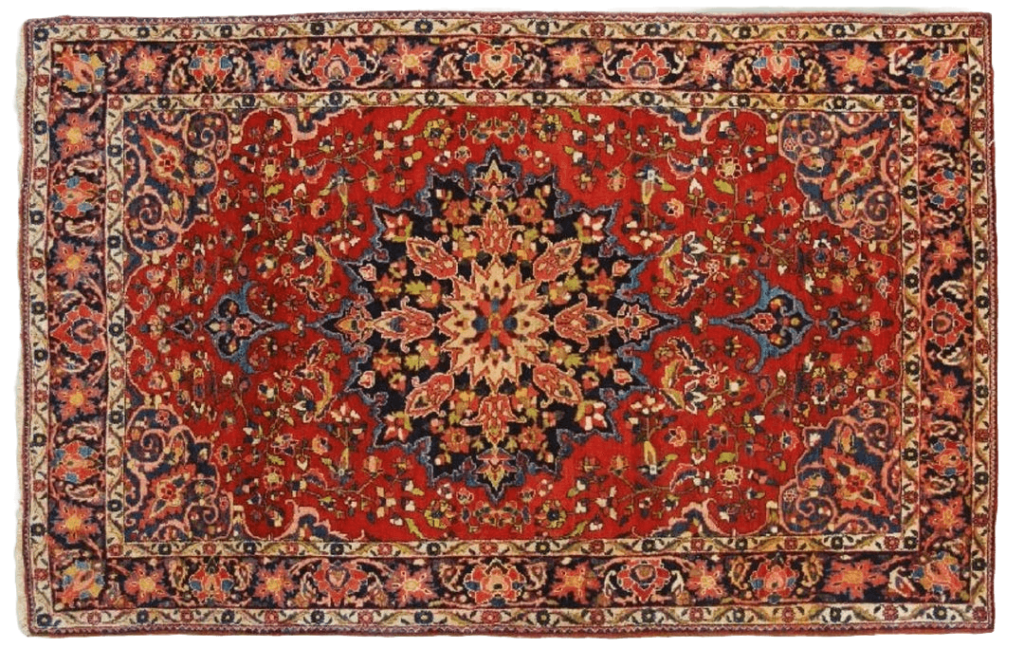



Types of Persian rugs
Persian rugs embody centuries of tradition while embracing modern tastes, merging ancient designs with contemporary styles. Heriz, Tabriz, Gabbeh, Isfahan, Sarouk, and more, they highlight the lasting appeal of Persian craftsmanship, effortlessly connecting the past and present.
Modern Persian Rug
The modern Persian rug combines classic elegance with modern simplicity. Designers use minimalist motifs, abstract patterns, and soft colors to fit today’s interiors. This makes the Persian rug a versatile home decor piece, offering timeless beauty with a modern touch.
Persian Rug Living Room
In the living room, a Persian rug adds warmth, texture, and color. Whether featuring a bold traditional pattern or a sleek modern design, it becomes the room’s centerpiece, tying together furniture and decor. More than a floor covering, it’s a piece of art that sparks conversation and draws admiration.
Turkish Carpets: A Symbol of Artistic Excellence and Resourcefulness
Turkish carpets are renowned worldwide for their eye-catching designs, vibrant colors, and exceptional craftsmanship. Like their Persian counterparts, they carry a rich history and cultural significance, with each pattern telling a story or symbolizing a tradition.
Color Symbolism in Turkish Carpets
Similar to their Persian equivalents, Turkish carpets are imbued with a rich array of colors, each color holding its own symbolic meaning. Vibrant reds convey strength and power, while deep blues signify protection and good fortune.
Browns and beiges, obtained from walnut shells and other natural materials, ground the design, representing the connection to the earth and the natural world. These colors not only beautify the space but also infuse it with layers of meaning, making Turkish carpets a compelling addition to any home.
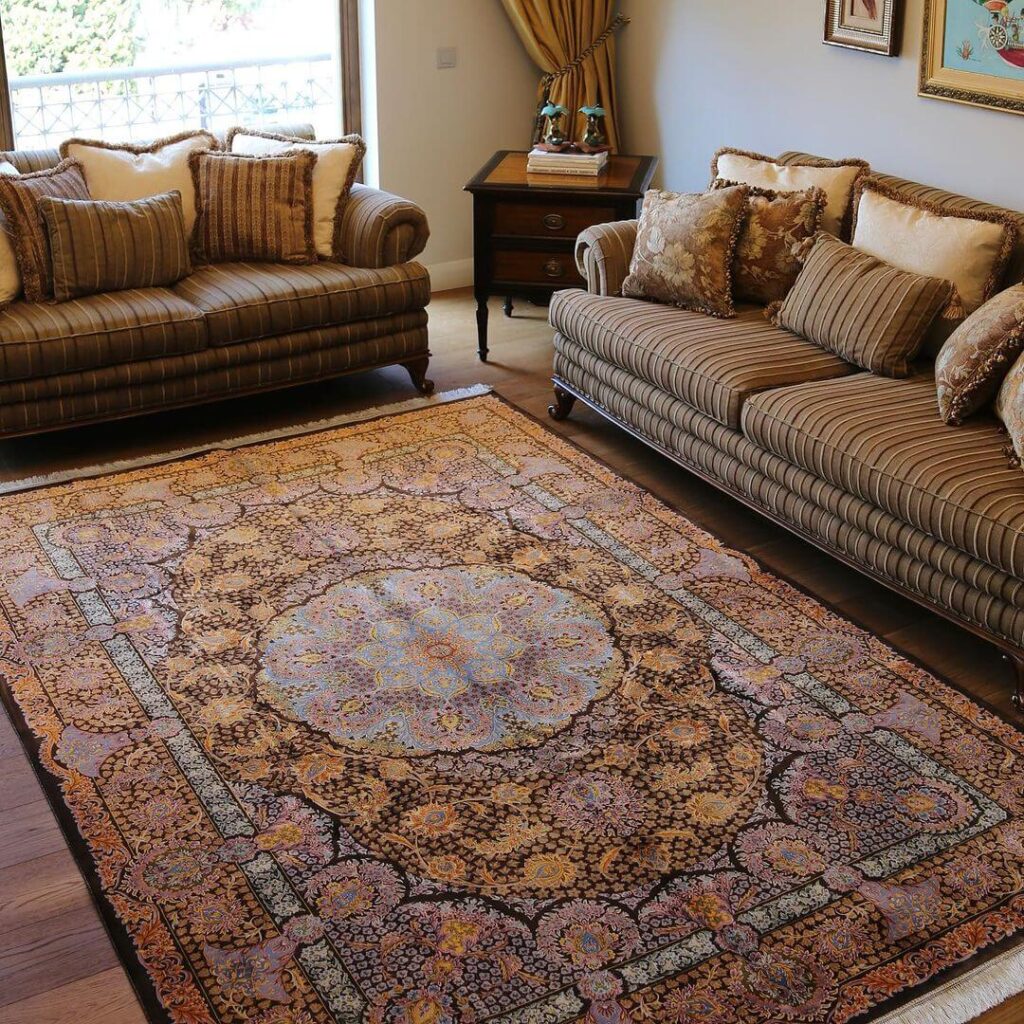

Types of Turkish rugs
Turkish carpets, known for their variety, cater to both traditional and modern tastes. Famous types like Hereke, Milas, and Konya each have unique characteristics and cultural significance, making them sought-after for various settings.
- Modern Turkish Carpets
Modern Turkish carpets blend contemporary design with traditional craftsmanship. They feature geometric shapes, neutral colors, and simple patterns, fitting modern homes that appreciate a touch of tradition. These carpets offer versatility and elegance, connecting the old with the new.
- Turkish Rugs for Living Room
Turkish rugs bring vibrant colors and intricate designs to the living room, serving as the room’s focal point. Traditionally featuring medallions, floral patterns, and detailed borders, they highlight centuries-old craftsmanship.
Indian Rugs: A Detailed Exposition of Exotic Pattern
Moving from the complex designs and rich history of Turkish carpets, we explore the equally vibrant and culturally significant world of Indian rugs. Indian rugs are known for their dazzling colors, elaborate patterns, and the exquisite skill involved in their creation. These rugs are not just floor coverings but are pieces of art that tell stories of tradition, religion, and the daily life of their weavers.
Color Inspiration in Indian Rugs
Red in Indian rugs represents purity, wealth, and strength. It’s a dominant color that brings warmth and vibrancy, traditionally dyed with natural sources like lac for unique shades. Saffron, valued for symbolizing holiness and truth, adds sanctity and brightness to rugs. Indigo, denoting intuition and the mystic, captures the deep blues of the sky and sea, valued for its depth and creating striking contrasts in rugs.

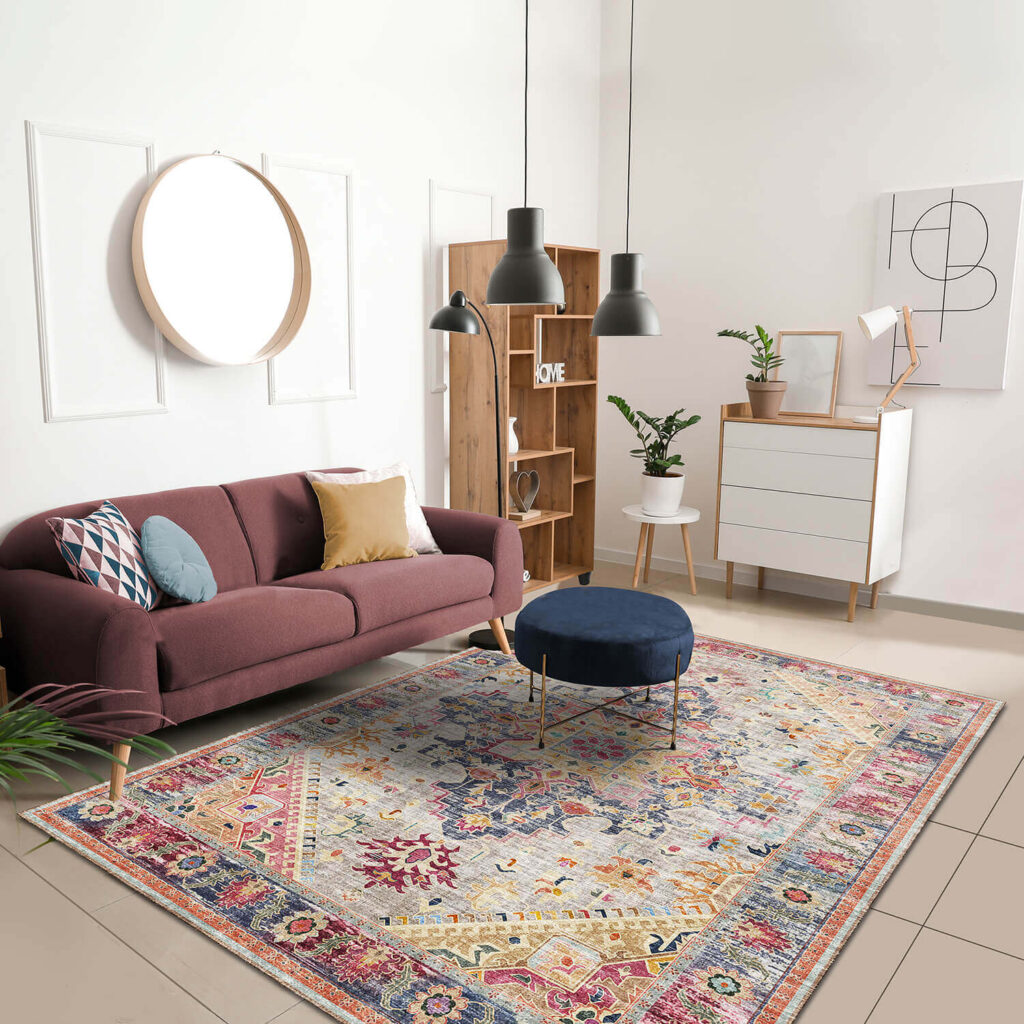
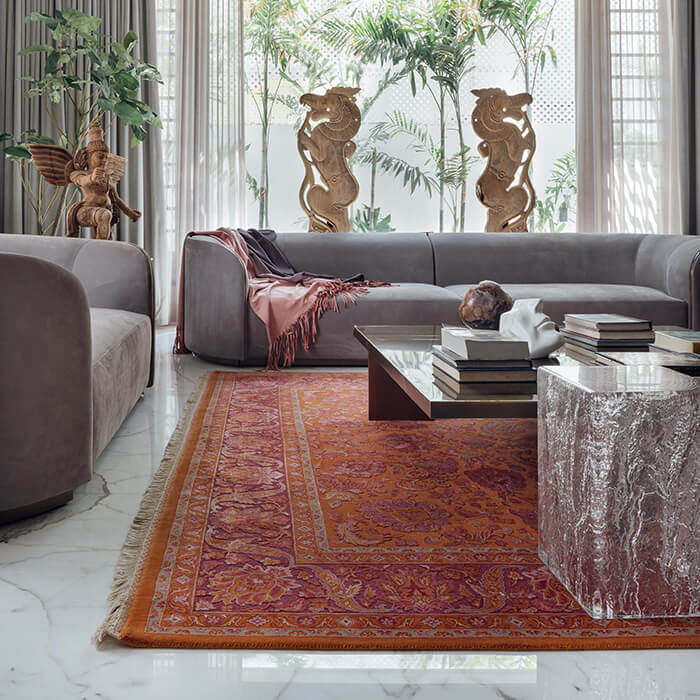
Types of Indian rugs
Indian rugs, from traditional to contemporary, showcase a rich cultural heritage. Famous types include Kashmiri carpets, Dhurries, Jaipur rugs, and Bhadohi carpets, each reflecting centuries of adaptation to modern tastes.
- Modern Indian Rugs
Modern Indian rugs, much like Persian and Turkish carpets, incorporate smaller designs along with simple patterns, soft colors, and creative designs. This blend adds elegance without the dominance of bold traditional motifs.
- Indian Rugs for the Living Room
Indian rugs for the living room often feature complex designs, including floral motifs, animal figures, and geometric patterns. These rugs are designed to serve as the centerpiece of the room, adding warmth, color, and character.
Kashmir Carpets: Enduring Elegance and Stunning Patterns
Originating from the beautiful valley of Kashmir, Kashmiri carpets are renowned for their exquisite craftsmanship and intricate designs. These luxurious hand-knotted rugs are made of fine wool, silk, or a combination, reflecting a centuries-old tradition. The art of carpet weaving in Kashmir was believed to have been introduced by Persian craftsmen, and over time, it has evolved to incorporate local designs and motifs, making each piece a reflection of its rich cultural heritage.
Afghan Carpets: Bold Colors, Unique Patterns, and Beautiful Designs
Afghan carpets are treasured across the globe for their striking patterns, bold colors, and durability. Crafted using traditional techniques that have been perfected over centuries, these rugs are predominantly made from wool, known for its high quality and resilience.
Afghan rugs often feature geometric patterns and a rich palette of deep reds, blues, and earth tones, making them distinctive in appearance. The most famous styles include the Khal Mohammadi, woven in the north of Afghanistan, and the intricately designed Turkman rug, both of which are named after their creators or ethnic groups known for their expertise in carpet weaving.
Afghan Rugs for Different Spaces
Afghan rugs are perfectly suited for various spaces within a home or office environment. Whether it’s the vibrant Khal Mohammadi rugs adding warmth to a living room or the sophisticated Turkman rugs enhancing the aesthetic of a formal dining area. In offices, these rugs can introduce a touch of tradition and elegance, creating a welcoming atmosphere for both employees and visitors. Additionally, smaller Afghan pieces work beautifully in foyers and hallways, offering a durable yet inviting first impression.

Second-Hand Rugs and Maintenance
Handcrafted new carpets certainly bring a layer of authenticity and beauty to any space, reflecting the rich heritage and craftsmanship of their origin. However, the allure of second-hand rugs cannot be overlooked. These pieces carry stories and history within their threads, adding a unique depth and character to a room. With proper care and maintenance, second-hand rugs not only retain their elegance but can also become even more valuable over time. They can accompany you for decades, evolving into cherished heirlooms that hold both aesthetic and sentimental worth.
Some Quick Tips
- Vacuum regularly to remove dirt and dust.
- Keep carpets out of direct sunlight and moisture to prevent fading and damage.
- Rotate your carpet periodically for even wear.
- Spot clean spills immediately with water and a mild detergent.
- Avoid chemical cleaners that could harm natural dyes.
- Contact a professional for repairs to maintain elegance and durability.
Repairing and Repurposing Second-Hand Carpets
Handmade carpets are renowned for their detailed designs and exceptional durability. Even when showing wear, they can be expertly repaired, giving them new life. This not only preserves their craftsmanship and heritage but also significantly extends their lifespan..
There’s also a trend in repurposing second-hand carpets, particularly in Iran where carpet making is a cultural tradition. Artisans and designers repurpose parts of old carpets to create stylish, modern home decor, reducing waste and offering a sustainable way to appreciate these textiles. From transforming pieces of antique rugs into vibrant pillow covers or wall art to turning smaller rugs into decorative accents, repurposing brings endless possibilities to enhance interiors. Each piece narrates a story of transformation, merging traditional craftsmanship with modern style.
Thank you for reading! We are a community of carpet weavers from around the world and hope you found this information helpful. Your interest and support mean everything to us as we continue to share the beauty and tradition of our craft.
Carpet weavers and lovers, join our community to share and celebrate the art and tradition of carpets!

